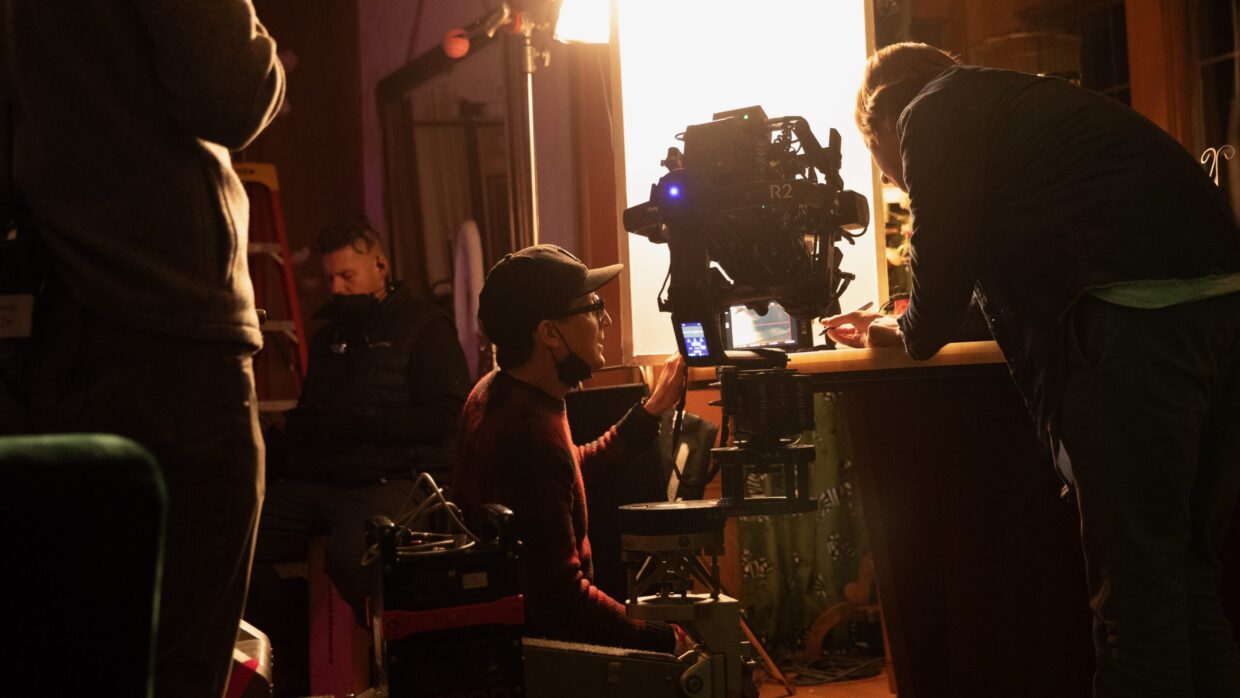 Back to selection
Back to selection
“Ninety Percent of Our Film Takes Place In One Location” | Greg Jardin, It’s What’s Inside
 Greg Jardin on the set of It's What's Inside
Greg Jardin on the set of It's What's Inside Films are made of and from places: the locations they are filmed in, the settings they are meant to evoke, the geographies where they are imagined and worked on. What place tells its own story about your film, whether a particularly challenging location that required production ingenuity or a map reference that inspired you personally, politically or creatively?
Ninety percent of our film takes place in one location, which makes that the default answer – a giant house in the middle of nowhere. The whole impetus behind the film’s premise was coming up with something that could unfold in a single location, which automatically places it in the all-in-one-house subgenre of films. I’m a huge fan of this subgenre – everything ranging from The Big Chill to The One I Love, but because there are so many films that share this idea, it was very important to me to make sure that this house felt truly unique, unlike any house we’ve seen before. We started looking for interesting houses across the country, and although the story takes place in an unspecified city, I was really drawn to the idea of shooting in the Pacific Northwest — partially due to the moody overcast vibe it’s famous for, and partially due to growing up a massive fan of Twin Peaks.
Once we found a house that had a solid foundation, our production designer, Terry Watson, and her team, went to town on it, transforming it from its original form to the house belonging to a deceased artist who had transformed its many rooms into art installations. This was a plot point, but was also an idea that I had come up with early on in the screenwriting phase to justify why the house is full of so many oddities. The house we found had just been put on the market, so we were able to swoop in and shoot there while the owner was away, and he more or less gave us carte blanche to change its appearance during the filming, provided that we’d reset it afterwards. We got a kick out of the fact that the estate manager saw what we did to it towards the end of filming and preferred to show it to prospective buyers in its new state. Although the house is still for sale.
See all responses to our annual Sundance Question here.
